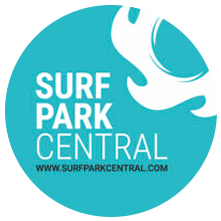Surfing is enormously fun and, as a pretty significant added bonus, has real and measurable mental and physical health benefits. There is a growing body of evidence that surfing is an effective form of therapy for diverse groups of people experiencing physical, mental, neurological, and emotional challenges.
Surf parks are able to make surfing experiences safely available to an even broader range of people in geographies previously unable to easily access traditional surfing spaces. URBNSURF in Melbourne reports that new types of communities and support groups are organically organizing themselves, including adaptive surfers, women surfers, moms who surf and take turns watching each others’ kids, and non-coastal boardriders clubs forming in dense urban areas.
Surf parks bring large-scale local employment in construction and operations, increased tourism arrivals, hotel stays, restaurant meals, retail purchases, and equipment rentals, and make a new recreation-based culture built on more than a thousand years of indigenous history available to local communities.
Yes, there are sustainability issues around land, water, and power to consider, as there are with any development. Surf parks shouldn’t be built in sensitive or high biodiversity value environments – brownfield urban sites make the most sense for many reasons. The surf park industry has developed practices, technologies and solutions that mitigate most sustainability concerns in most situations. For example, renewable energy self-sufficiency via onsite solar has already been achieved by The Wave, Bristol.
Despite the long list of surf park positives, there is a lingering gap in perception among the general public between allocating resources to surf park developments and allocating resources to better understood recreational developments. It seems to me that much of the non-surfing public is unable or unwilling to process the idea that a surfing attraction could be a legitimate use of resources.
This month, I’m going to dig into this perception gap a little. In part 1, I’m going to focus on the surf park developments in the Coachella Valley, which have caught the eye of social justice warriors and provide a stark juxtaposition in perceptions between the allocation of water resources to a surf park versus, say, a golf course. In part 2, I’ll zoom out a little to the national level in the US and look at water use in several other recreational pursuits that do not suffer from the perceptions of frivolity that surfing seems to the United States at least.
At the height of the 2022 California drought, comedian and social commentator John Oliver (who’s work, for the record, I normally really enjoy) described the building of 4 surf lagoons in the Coachella Valley as “monumentally stupid” and compared them to “a wall of constantly flushing toilets, a hose that runs all day in the middle of a concrete parking lot, and ‘Wet Frank’ a man we pay to dunk buckets of water on himself all day.” Some funny imagery to consider, but none of those things brings any social, community, health, or economic benefits to local communities.
The subtext of John Oliver’s rant could not be more clear: surf parks are a frivolous waste of water with no redeeming qualities. He took this position about four surf parks in a region that already has 120 golf courses that avoided any mention at all. So, according to Oliver, from a water perspective, 120 golf courses are fine. 4 surf parks are monumentally stupid.
Let’s dig in a little because I don’t think it’s really about the water at all. Why? Because every one of those 120 golf courses in the Coachella Valley uses 277 million gallons of water per year. That’s 33.25 billion gallons total. Eighteen of the valley’s 120 golf courses use a non-potable blend of recycled water, and Colorado River water, 36 use all Colorado River water imported from the Coachella Canal, and the remaining 66 (55%) use potable water to the tune of 18.3 billion gallons per year.
John Oliver showed details of the largest and most water intensive of the proposed surf parks – Thermal beach club and with its proposed 20 acre lagoon which includes an Endless Surf basin. The implication was that the other three developments were equivalent. They are not.

The Palm Springs Surf Club (PSSC), which uses Surfloch technology, holds 1.4 million gallons and may use up to 3 million gallons per year (a little more than 1% of a typical golf course using 277 million gallons per year). PSSC keeps its water use down by employing a number of sustainable design elements in its water treatment system. For example, filtration backwash water (often a major source of water loss from pool systems) will be reclaimed, treated, and reused at the facility. To be clear, you could run almost 100 Palm Springs Surf Clubs on the amount of water 1 golf course in the Coachella Valley uses.

DSRT Surf, a large Wavegarden Cove, holds 7 million gallons of water but expects to use 23 million gallons each year (8.3% of a golf course) through evaporation, filtration and maintenance. Despite this, DSRT Surf will be water-negative due to its efforts to remove unnecessary turf around its adjoining, pre-existing Desert and replace it with xeriscaping (Oliver praised similar initiatives in Las Vegas in the same show). 12 DSRT Surf lagoons could be run on the amount of water 1 golf course in the Coachella Valley uses.

Coral Mountain in La Quinta, a KSWaveCo powered project, was scuttled by local government and the surrounding community in large part because of concerns over water use, only for the government to later approve a golf course development that will use even MORE water than the surf park – reportedly 25% more water (KSWaveCo uses a very large lagoon). The net result is another golf course (using 277 million gallons of water per year) being built in a desert valley that already has more than 120 golf courses.

The debate over surf park resource allocation highlights the persistent gap in perception, exemplified by critiques like John Oliver’s, which spotlight a societal reluctance to embrace surfing attractions as a legitimate use of resources while accepting the staggering water use by golf courses without question. This comparison is not made to attack the golf industry but rather to reveal the nature of arguments against surf park developments on the basis of water resource allocations – i.e., they are based on misplaced perceptions of surfing as a frivolous activity with no upside for local communities, rather than an understanding of the relative water use per user of a surf park vs other recreation options including golf.
























You must be logged in to post a comment Login